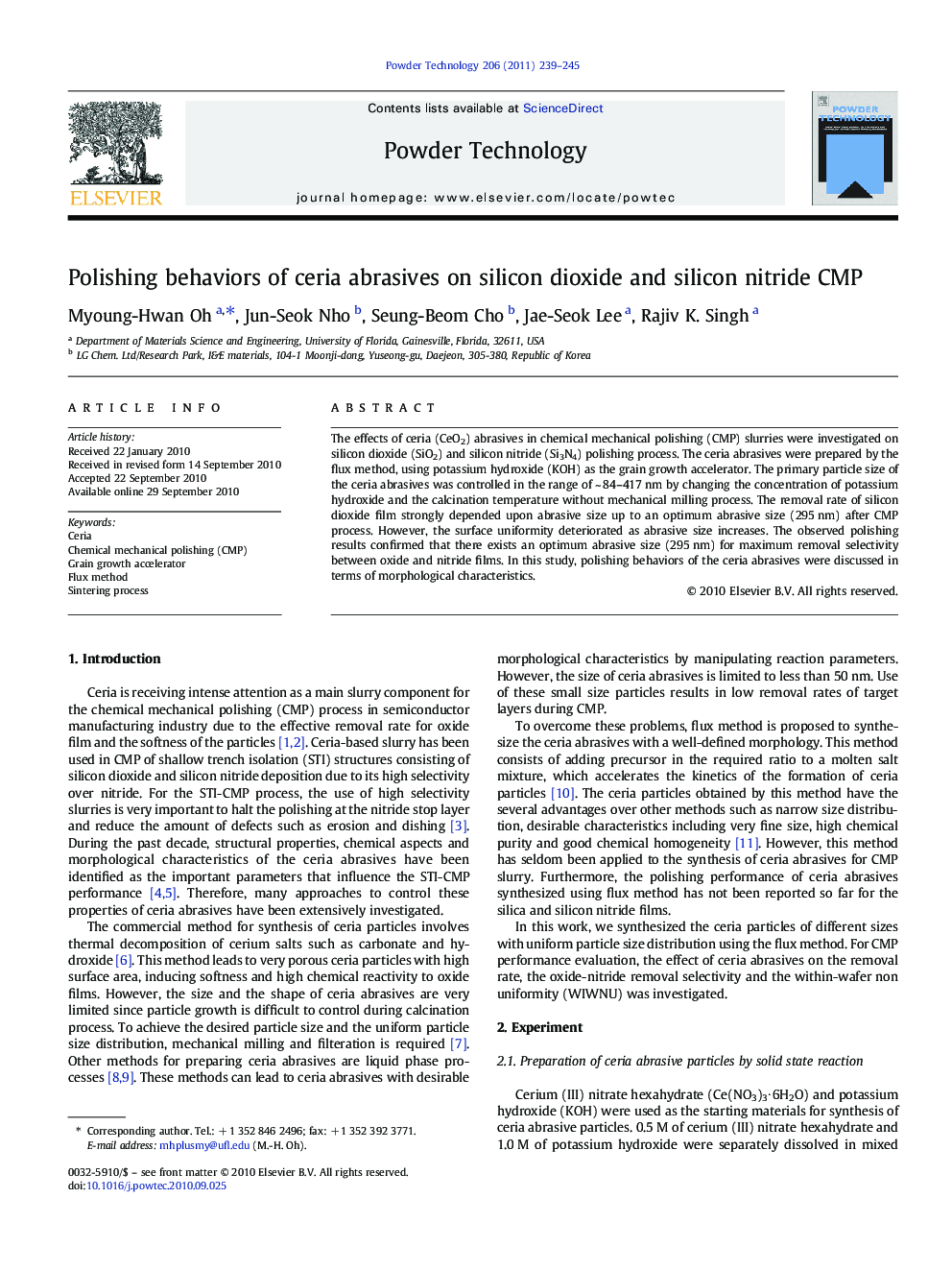| Article ID | Journal | Published Year | Pages | File Type |
|---|---|---|---|---|
| 237690 | Powder Technology | 2011 | 7 Pages |
The effects of ceria (CeO2) abrasives in chemical mechanical polishing (CMP) slurries were investigated on silicon dioxide (SiO2) and silicon nitride (Si3N4) polishing process. The ceria abrasives were prepared by the flux method, using potassium hydroxide (KOH) as the grain growth accelerator. The primary particle size of the ceria abrasives was controlled in the range of ~ 84–417 nm by changing the concentration of potassium hydroxide and the calcination temperature without mechanical milling process. The removal rate of silicon dioxide film strongly depended upon abrasive size up to an optimum abrasive size (295 nm) after CMP process. However, the surface uniformity deteriorated as abrasive size increases. The observed polishing results confirmed that there exists an optimum abrasive size (295 nm) for maximum removal selectivity between oxide and nitride films. In this study, polishing behaviors of the ceria abrasives were discussed in terms of morphological characteristics.
Graphical AbstractThe ceria particles were prepared by the flux method, using potassium hydroxide (KOH) as the grain growth accelerator to promote interdiffusion on contact surface between the smaller particles and the larger ones. The resultant particles were used as abrasive for ceria-based slurry in CMP process. This study investigated polishing behaviors of the ceria particles in terms of morphological characteristics.Figure optionsDownload full-size imageDownload as PowerPoint slide
